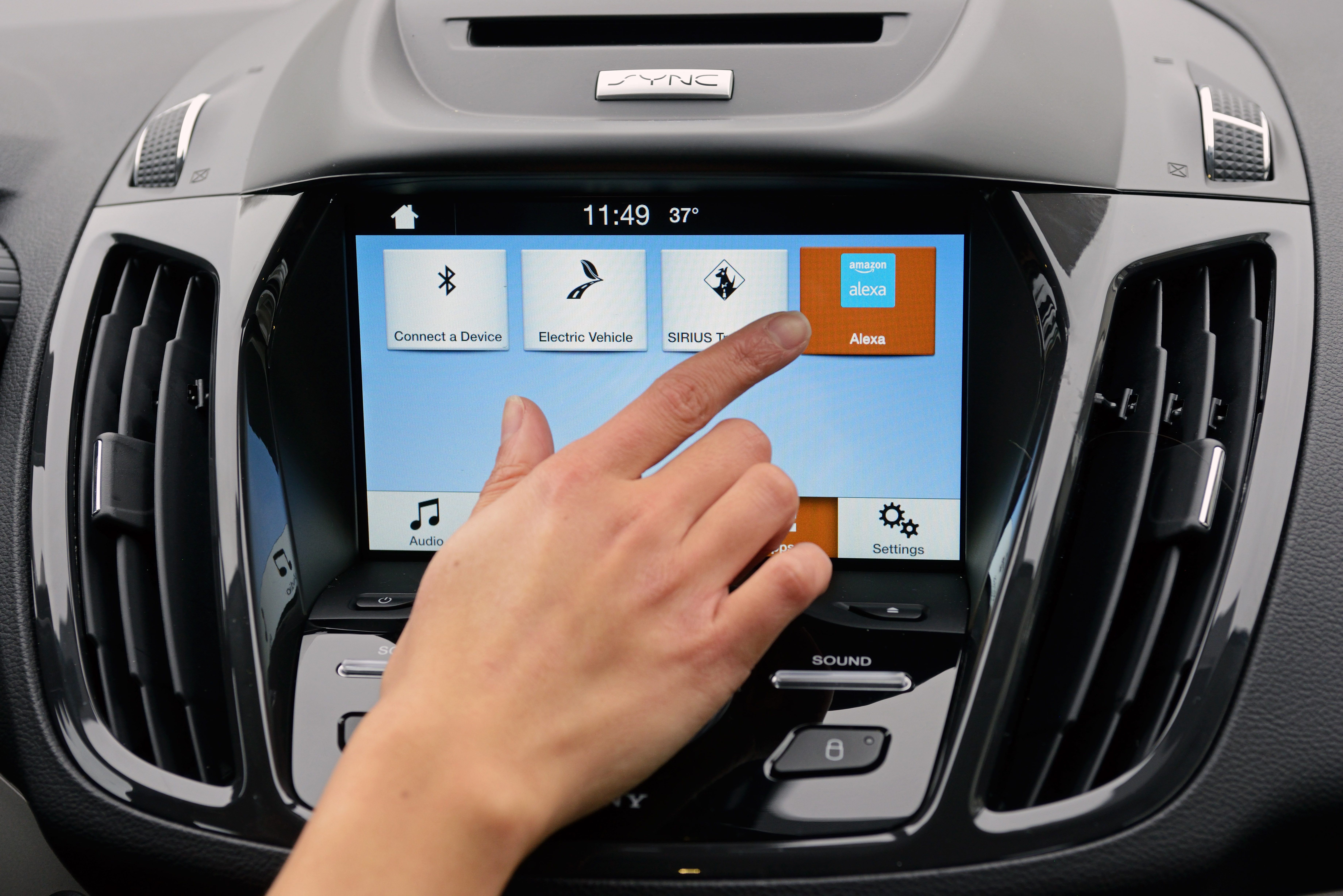

Best in show
Amazon Alexa
There was one word we heard more than anything else at CES this year: Alexa. Amazon's voice assistant appeared in everything from speakers and robots to refrigerators and cars over the past few days, and while those integrations weren't all perfect, Alexa has always been about potential — the potential to be everywhere, control everything, and get anything done. Amazon still has to prove that it can hold it all together, but at the start of 2017, Alexa has more potential than ever to excite us and delight us. Now that it's everywhere, it's time to see just how much it can do.


Best TV
LG Wallpaper OLED
We were pretty evenly torn between this and Sony’s OLED for my top CES pick. A closed-door demonstration of the Sony Bravia made it even harder; picture is superb and the Acoustic Sound Surface system that Sony developed — where audio resonates from the TV panel itself — sounds way nicer than I expected. But in terms of TVs that made onlookers go “oh wow,” there was really nothing at this show that compared to LG’s new signature OLED. It’s not quite as thin as a credit card, but it’s no thicker than a couple coins stacked together — and that’s amazing. Measurements aside, it’s a (very expensive) preview of the wall art that TVs will become over the coming years.


Best robot
LG Hub Robot
We've seen a gaggle of new robots introduced at CES this year that use Alexa to converse with their owners. But the LG Hub paired this capability with a wide range of LG appliances and bots, turning its friendly bot into a command and control center for your home. You can use the Hub to take a peek inside your LG refrigerator, turn down the heat on your LG dryer, or start up your LG lawn mowing robot. Of all the Alexa integrations we saw at CES this year, this one seemed like the most interesting and fully baked.


Most touching
Tanvas touchscreen
There are countless gadgets and concepts at CES but nothing got the attention of The Verge staff more than Tanvas’ haptic tablet. Literally everyone ran back to our press table clamouring about how cool it was to physically feel texture on a touchscreen. While the concept itself isn’t new, Tanvas’ take on next level haptic feedback is quite refined. Particularly, the ability to “feel” fabric rigidity on a tablet before deciding to buy a pair of pants is something that could truly take touchscreens beyond what we currently have with Apple’s 3D Touch.
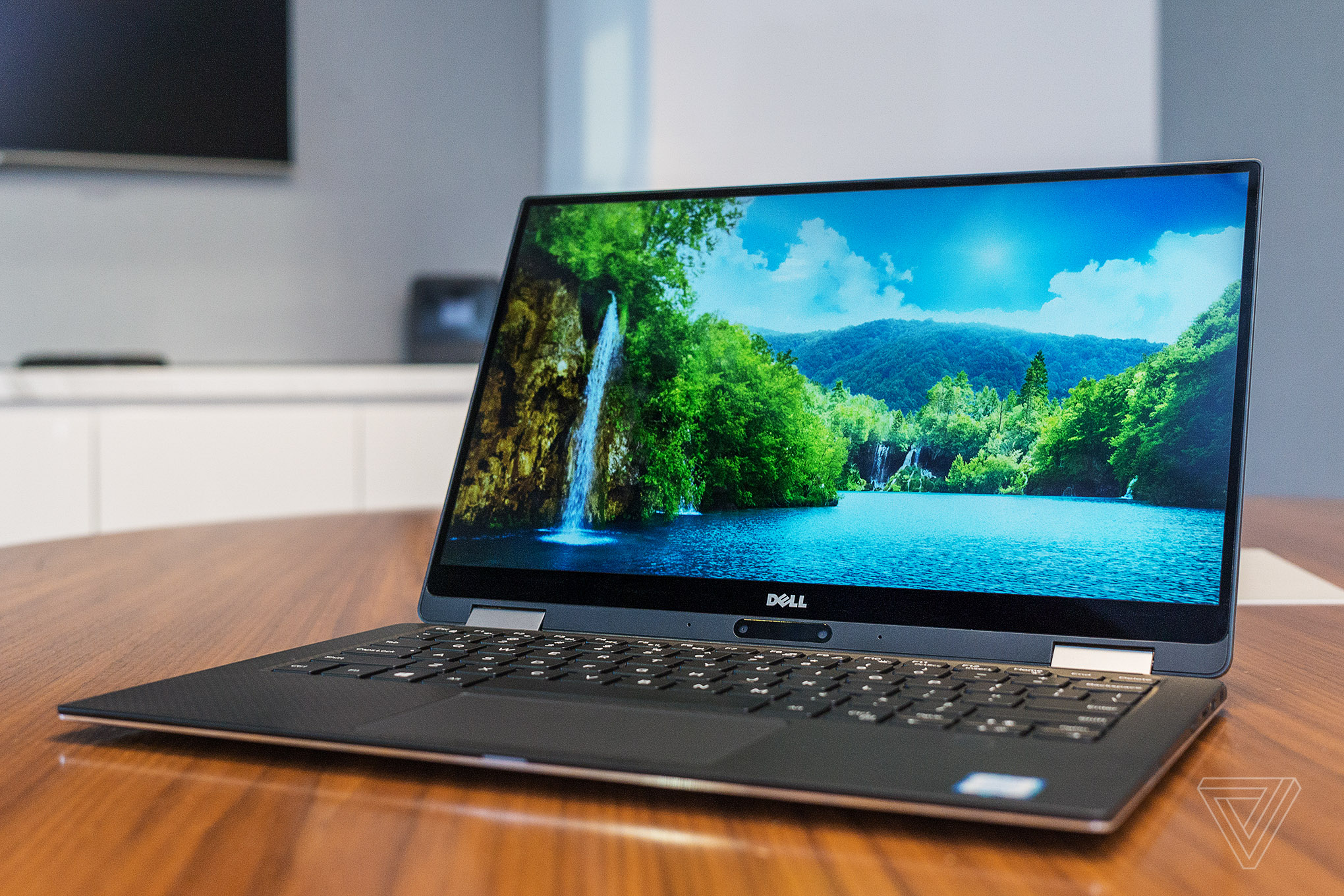

Best laptop
Dell XPS 13 convertible
The laptops at this year’s CES prove that the downsides to purchasing a 2-in-1 PC are virtually nonexistent today. Dell made this point clear when it announced a new 2-in-1 version of its well-received XPS 13 laptop. While the standard XPS 13 has enjoyed a touchscreen option for quite some time, this convertible model brings its utility full circle. You now get the best of both worlds: one of the most dependable and well made Windows laptops with the versatility of a tablet, without sacrificing on design or having to put up with subpar build quality. Plus, the XPS 13 gets a claimed 15 hours of battery life. Try to top that with your tablet.
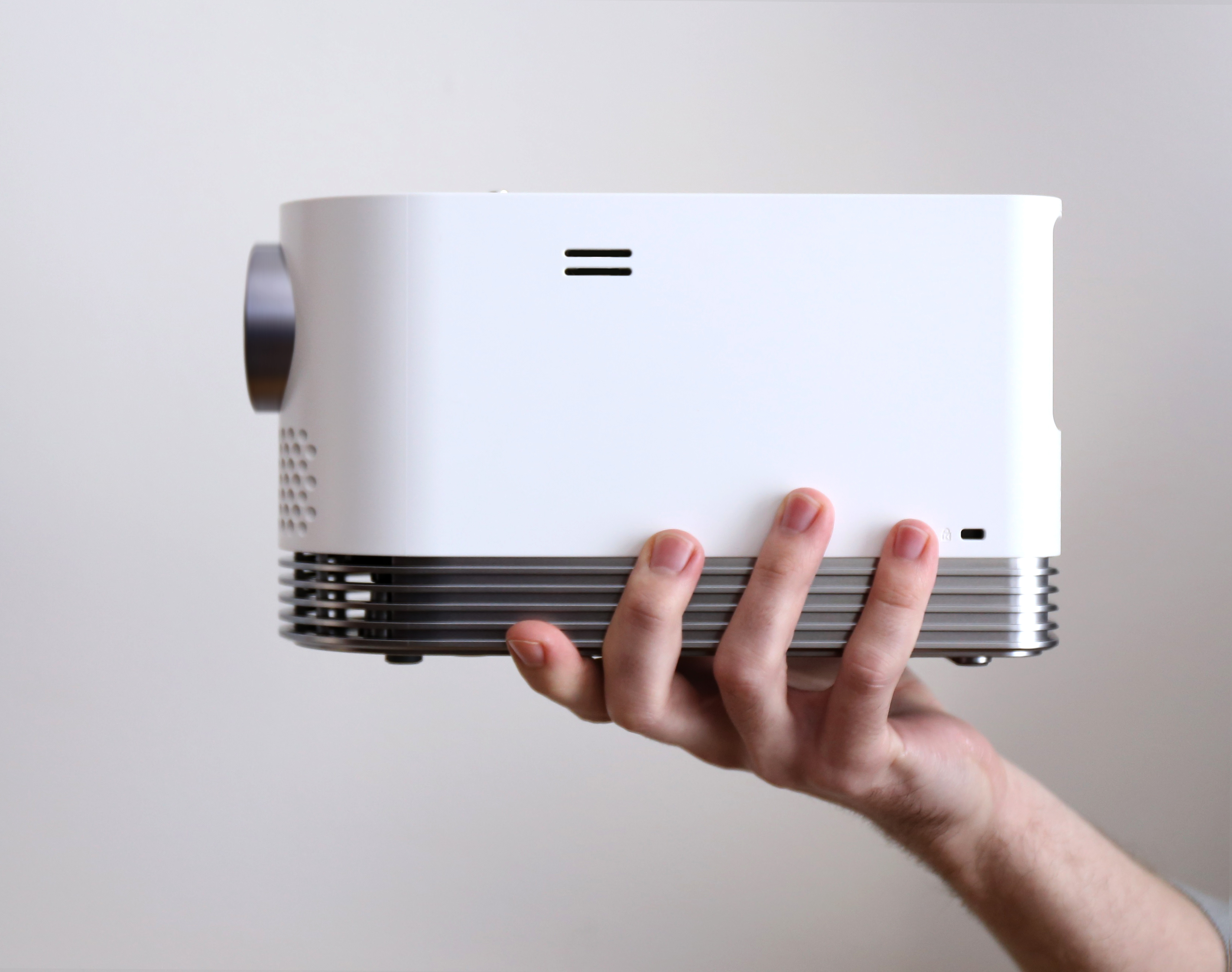

Best projector
LG ProBeam
Projectors have always been the also-rans at CES, a show dominated by giant glowing rectangles. But for many, the phone has become the TV, and TVs the relics of an old viewing model. It'll be bright, portable projectors like the webOS-powered ProBeam HF80J from LG that provide the occasional big screen escape to a new generation of viewers. No, it can't compete with the vibrancy of LG's own "Wallpaper" television, but LG's 77-inch OLED can't be picked up and moved to any room where a 100-plus-inch display is needed for a night of Netflix binging or a game of FFXV.


Best four-in-one
Samsung FlexWash + FlexDry
Tomorrow's technology always promises more. Two-in-one convertibles that are both computers and tablets. A laptop with three screens for triple the utility. But Samsung's FlexWash + FlexDry laundry system took the cake this year, with an objectively superior four-in-one washer/dryer system that shattered years of stagnant laundry technology with the simple question: what if your washing machine and dryer were actually TWO washing machines and dryers? With a total of four Wi-Fi controlled laundry devices, the FlexWash + FlexDry are mathematically the best hybrid device we saw this year.


Best Echo
Lenovo Smart Assistant
They say imitation is the sincerest form of CES. Actually “they” don’t say that, I wrote it in an earlier post about the Lenovo Smart Assistant, and I’m sticking to it. But Lenovo’s Smart Assistant speaker is the best damn imitation of Amazon’s Echo we’ve seen to date. It works with Alexa, just like the Echo; it’s tubular, worthy of tennis-ball-tube comparisons, just like the Echo; and it has a bunch of far-field microphones and a mechanical volume ring at the top, just like the Echo. Where it differs, though, is what matters: Lenovo is also introducing a Harman Kardon version of the speaker, which presumably will offer higher-quality sound than the Amazon Echo or Google Home have. And all for $180, which is the same price as the Echo. Your move, Amazon.
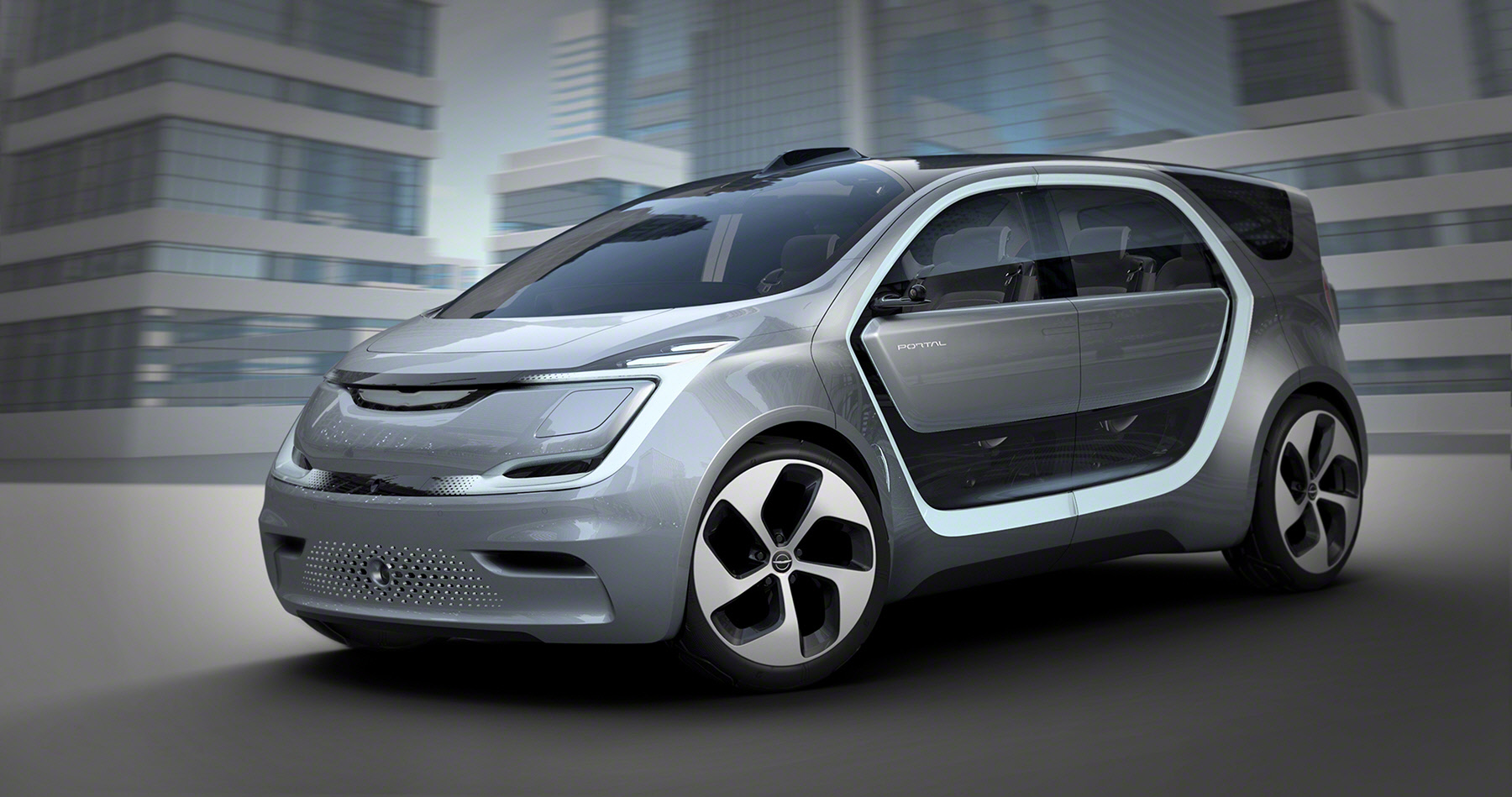

Best millennial transport
Chrysler Portal
Have you heard about Millennials? Chrysler sure has. And those millennials are about to start having lots of millennial babies. You know what happens when you start having babies? You start wanting a minivan. And to satisfy this new child-rearing millennial milieu, Chrysler has developed the Portal, an internet-connected, social network-integrated, wifi-enabled, elevator door-having millennial box on wheels that is ready to satisfy all your millennial travel needs of your evolving millennial lifestyle. There is no other millennial minivan but this one, so naturally it’s the winner of our first Best Millennial Transport award. To anyone born after 1987, we’ve found your next car.


Best ugly
Samsung Odyssey
Ugly things are sometimes good, but in the case of new gaming gear at CES, ugly is as ugly looks. Samsung’s new Odyssey sub-brand for gaming notebooks is just plain bad: flimsy plastic and LED lights all over, uninspiring displays, and the world’s most inexplicable touchpad decoration. This award was a tight race between Samsung’s Odyssey and Lenovo’s similarly insipid Legion gaming laptops, but Samsung wins on the strength of its obscenity of a touchpad and its higher starting price.


Best rideable
URB-E
If you set aside the $1,699 price tag, the new Urb-E Pro is the first idea from this small California company that really feels viable. At a glance, it doesn’t look radically different from the foldable scooters that Urb-E has been bringing to CES for a few years. But the Pro has racecar-inspired pushrod suspension, which means it rides smoother than ever. The motor is now on the back wheel, which makes it way easier to drive. Both of those things mean the Urb-E Pro is a lot more fun than its predecessors.
The Urb-E Pro is also more practical: the removable battery has four standard USB ports and a USB Type-C port, and holds enough charge to refill your Macbook’s battery five times over. There’s really more to love here than ever before. You just better start saving now.

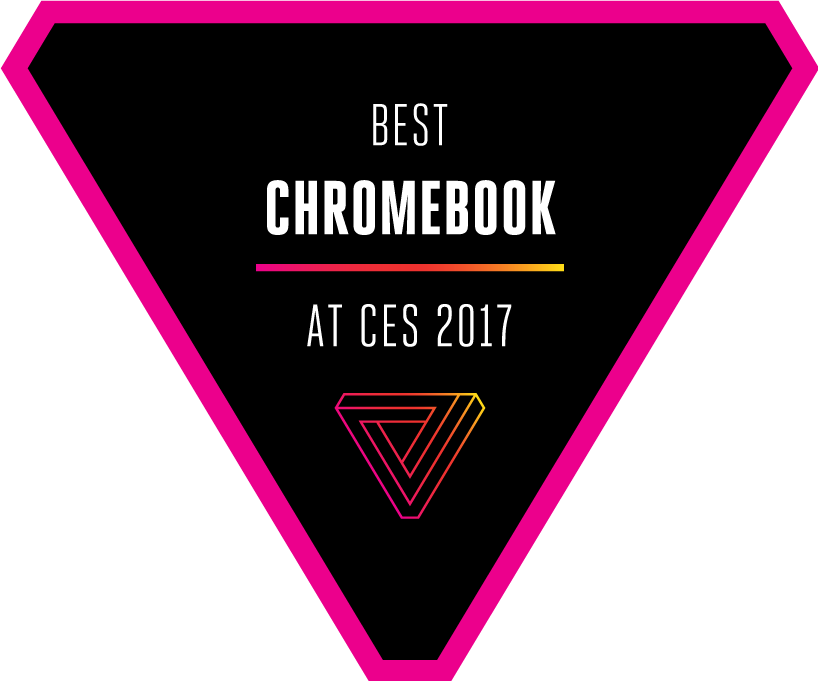
Best Chromebook
Samsung Chromebook Plus / Pro
The Chromebook is interesting again! Well, at least this one is. Samsung's new Chromebook Plus and Pro are the first Chromebooks with support for a stylus and were built in partnership with Google. They can flip around 360 degrees to switch between laptop and tablet modes quickly, and they come with support for Android apps available through the Google Play Store.
Google is also using the cloud to improve writing on the screen with the stylus. This is Google's most serious shot at Apple's iPad Pro and Microsoft's Surface Pro, and we'll see how well it can compete when it launches in February.


Best acceleration
Faraday FF91
Last year, The Verge awarded Faraday Future with its coveted “Best Nothing” award for releasing a completely static concept car rather than the promised production vehicle. This year the troubled startup showed off a real car that was real fast, but no less fictional. In the months leading up to this year’s CES, FF dropped a bunch teasers showing its car going head-to-head with the fastest of the fast: Ferrari, Bentley, Tesla. And at its big event in Las Vegas, the company brought the drag race indoors in order to showcase the FF91’s acceleration: 0 to 60 in 2.39 seconds. No question this car is fast. Is it the fastest electric car on the market? Nope, because it’s technically not on the market, nor does it seem like it will be any time soon. FF still faces some significant hurdles before it can lay claim to that title.


Best swag
Intel barf bags
What's not to love about Intel handing out paper bags for its virtual reality-focused CES keynote? There’s the self-aware joke about VR’s greatest danger, motion sickness. There’s the grace of offering basically worthless swag that we journalists won’t have to worry about either politely rejecting or trying to give away. And there’s the overall boldness of filling a room with Oculus Rift headsets and turning a CES press conference into a guided tour of virtual reality. Luckily, I don’t think any of us actually needed the bags for it.


Hot garbage
Simplehuman Trash Can
CES is a massive conference, and it's inevitable that some of the products introduced just turn out to be trash. But Simplehuman's voice-activated, Wi-Fi enabled trash can takes the idea of "garbage tech" a bit more literally. And while opening your garbage can by shouting at it or automatically ordering more garbage bags when you run out isn't something anyone needs per say, the elegant design and polished implementation make Simplehuman's can the hottest garbage tech we saw.

Best pixels
Dell 8K monitor
We come to CES because we want to see some glimpse of the future. Dell’s 8K display is not a must-have for anyone today, but it foreshadows — and brings nearer — a future where the incredibly high pixel density that we take for granted on smartphones can be stretched out to the dimensions of a full 32-inch canvas. Simply a spectacular display, with the color accuracy and extraordinary resolution to make every other monitor feel a little bit inadequate in its shadow.


Best VR
HTC TPCast
I think the HTC Vive is the best VR system available, but I think the heavy cable is the worst thing about it. The new TPCast peripheral removes that downside, so how could it not win Best VR? I wasn’t expecting a wireless solution to come along for years, but that’s exactly what HTC has managed (via its Vive X internal startup accelerator). I used TPCast in several applications, and found myself forgetting that I was using anything unusual. And in the short term, letting users forget about the technology has to be the most important goal for virtual reality.


Best danger
Draco drone
While drone racing has been growing in popularity, to get into the sport you had to build your own aircraft. That meant learning how to program and solder. That changed at CES with the introduction of UVify’s Draco drone, which can go 100mph right out of the box. It costs $499 and has a modular design that makes it easy to repair after a crash. Because believe me, you will crash — a lot.


Most hyped
Artificial intelligence
2016 was a breakout year for artificial intelligence, but after the adulation, comes the hype. If you believed every press release you read from CES 2017, you’d think we were living in a future full of hyper-intelligent AI gadgets capable of, well, just about anything. In reality, most of the “artificial intelligence” on show was just good old data analytics. You need machine learning to make those algorithms work, but it’s not the same as AI. The exception to the rule is the irresistible rise of Amazon’s Alexa — but that’s a whole other story.


Gamer's best friend
Logitech G533 headset
Gaming headsets usually struggle to rise above the level of mediocrity, but Logitech’s new G533 clears that bar effortlessly. It’s that rare headset that sounds great while playing music as well as playing games, performing double duty with a rare level of fidelity. The G533 is light, comfortable, and, with its own wireless dongle that ensures long connectivity and no dropouts, it’s highly mobile too. Also, for a piece of gaming gear, it’s admirably restrained in its looks and design.